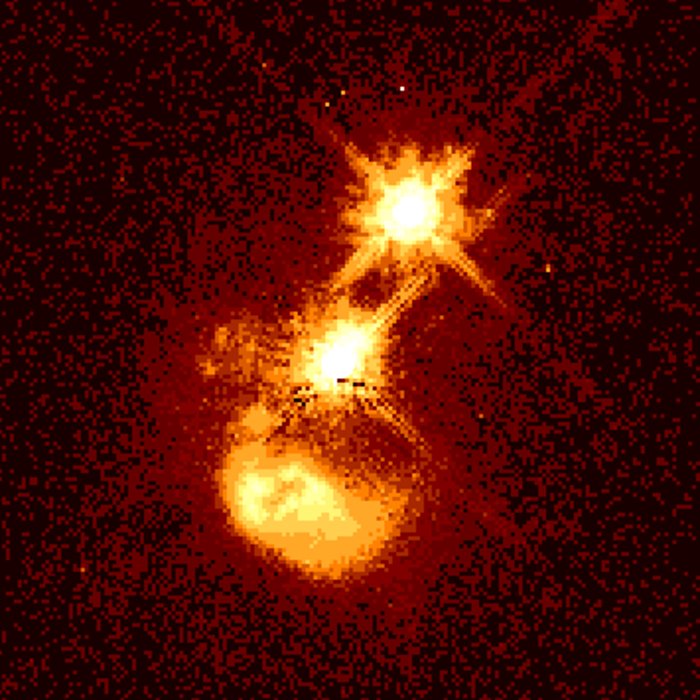Quasar IRAS 04505-2958
The photo reveals evidence of a catastrophic collision between two galaxies traveling at about 1.5 million km/hour. The debris from this collision may be fueling quasar IRAS04505-2958, which is 3 thousand million light-years from Earth. Quasars reside in a variety of galaxies, from normal to highly disturbed. When seen through ground-based telescopes, these compact, enigmatic light sources resemble stars, yet they are thousand of millions of light-years away and several hundred thousand million times brighter than normal stars. Astronomers believe that a quasar turns on when a massive black hole at the nucleus of a galaxy feeds on gas and stars. As the matter falls into the black hole, intense radiation is emitted. Eventually, the black hole will stop emitting radiation once it consumes all nearby matter. Then it needs debris from a collision of galaxies or another process to provide more fuel.
The photo reveals evidence of a catastrophic collision between two galaxies traveling at about 1 million mph.
The debris from this collision may be fueling quasar IRAS04505-2958, which is 3 billion light-years from Earth.
Credit:About the Image
About the Object
| Name: | IRAS 04505-2958, QSO B0450-299 |
| Type: | Early Universe : Galaxy : Activity : AGN : Quasar |
| Distance: | z=0.246 (redshift) |
| Category: | Quasars and Black Holes |
Colours & filters
| Band | Wavelength | Telescope |
|---|---|---|
| Optical V | 606 nm |
Hubble Space Telescope
WFPC2 |
